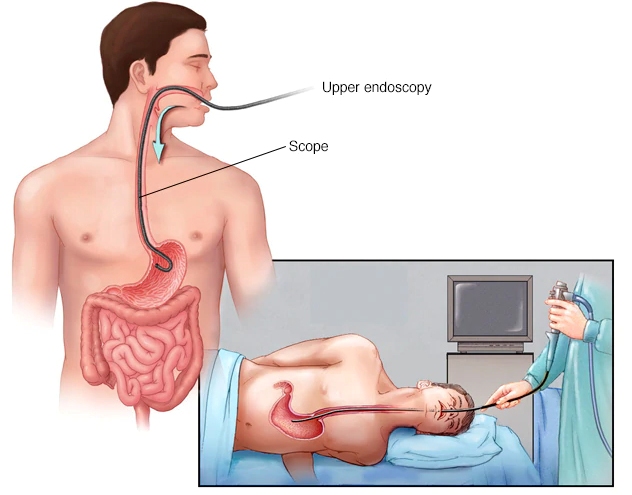State of the Art Nexgen I-Scan Endoscopy
What is an upper GI endoscopy?
An upper GI endoscopy or EGD (esophagogastroduodenoscopy) is a procedure to diagnose and treat problems in your upper GI (gastrointestinal) tract.
The upper GI tract includes your food pipe (esophagus), stomach, and the first part of your small intestine (the duodenum).
This procedure is done using a long, flexible tube called an endoscope. The tube has a tiny light and video camera on one end. The tube is put into your mouth and throat. Then it is slowly pushed through your esophagus and stomach, and into your duodenum. Video images from the tube are seen on a monitor.
Why it's done
An upper endoscopy is used to diagnose sometimes, treat conditions that affect the upper part of your digestive system, including the esophagus, stomach and beginning of the small intestine.

Your doctor may recommend an endoscopy procedure to:
- Investigate signs and symptoms- An endoscopy may help your doctor determine what's causing digestive signs and symptoms, such as nausea, vomiting, abdominal pain, difficulty in swallowing and gastrointestinal bleeding. It is the treatment of choice in controlling the upper GI bleed as last line.
- Diagnose- Your doctor may use an endoscopy to collect tissue samples (biopsy) to test for diseases and conditions, such as anemia, bleeding, inflammation, diarrhea or cancers of the digestive system.
- Treatment- Your doctor can pass special tools through the endoscope to treat problems in your digestive system, such as widening a narrow esophagus, clipping off a polyp or removing a foreign object.